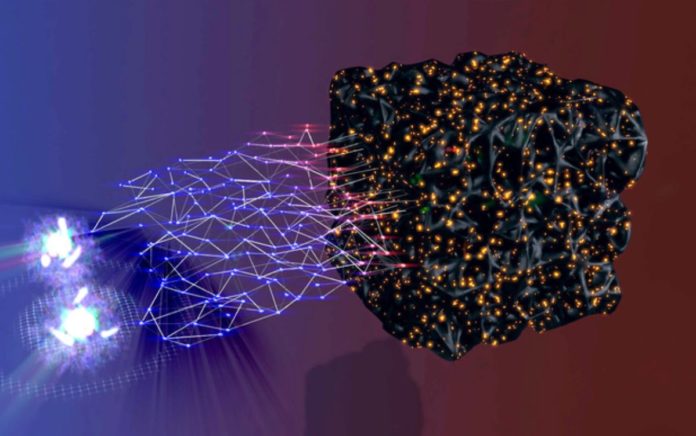When no experimental data is available, the method combines quantum mechanics and machine learning to reliably forecast oxide reactions at high temperatures; it might be used to develop clean carbon-neutral steel production and metal recycling processes.
Metals must be extracted from oxides at high temperatures not only for the production of metals like steel, but also for recycling. Researchers have been looking for new ways to build “greener” extraction procedures because present extraction processes are particularly carbon-intensive and emit enormous amounts of greenhouse gases.
This task has been particularly difficult in the lab since it necessitates the use of expensive reactors. Building and running computer simulations is an option, but there is presently no computational approach for properly predicting oxide reactions at high temperatures when no experimental data is available.
A Columbia Engineering team claims to have created a new computation technique that reliably predicts the reduction temperature of metal oxides to their base metals by combining quantum mechanics and machine learning. Their method is as computationally efficient as traditional zero-temperature computations and, in their experiments, more accurate than computationally intensive quantum chemistry simulations of temperature effects.
“Decarbonizing the chemical industry is critical if we are to transition to a more sustainable future, but developing alternatives for established industrial processes is very cost-intensive and time-consuming,” said Alexander Urban, an assistant professor of chemical engineering.
“A bottom-up computational process design that doesn’t require initial experimental input would be an attractive alternative but has so far not been realized. This new study is, to our knowledge, the first time that a hybrid approach, combining computational calculations with AI, has been attempted for this application. And it’s the first demonstration that quantum-mechanics-based calculations can be used for the design of high-temperature processes.”
Quantum mechanics calculations can reliably forecast the amount of energy chemical reactions demand or release even at extremely low temperatures, as the researchers were aware.
They used a machine-learning algorithm to learn the temperature dependency using publicly available high-temperature measurements in order to supplement this zero-temperature theory.
Rather than just extracting metal at high temperatures, they devised a method that could account for how the “free energy” would fluctuate depending on the temperature, be it high or low.
“Free energy is a key quantity of thermodynamics and other temperature-dependent quantities can, in principle, be derived from it,” said José A. Garrido Torres, the paper’s first author.
“So we expect that our approach will also be useful to predict, for example, melting temperatures and solubilities for the design of clean electrolytic metal extraction processes that are powered by renewable electric energy.”
“The future just got a little bit closer,” said Nick Birbilis, an expert for materials design with a focus on corrosion durability, who was not involved in the study.
“Much of the human effort and sunken capital over the past century has been in the development of materials that we use every day – and that we rely on for our power, flight, and entertainment. Materials development is slow and costly, which makes machine learning a critical development for future materials design. In order for machine learning and AI to meet its potential, models must be mechanistically relevant and interpretable. This is precisely what the work of Urban and Garrido Torres demonstrates. Furthermore, the work takes a whole-of-system approach for one of the first times, linking atomistic simulations on one end engineering applications on the other – via advanced algorithms.”
The team is now working on extending the approach to Solubility, conductivity, and melting are just a few of the temperature-dependent material features that the team is now exploring in order to develop carbon-free and clean electric metal extraction procedures.
Source:10.1038/s41467-021-27154-2
Image Credit: RODRIGO ORTIZ DE LA MORENA AND JOSE A. GARRIDO TORRES/COLUMBIA ENGINEERING
You were reading: New computational model predicts oxide reactions at high temperatures
